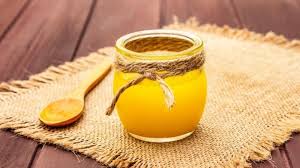The right amount of ghee you must have
In Indian households, it is common to add ghee in every food generously. Be it dal, rice or chapati, every food has a thick layer of ghee on top of it. Ghee is nutritious and adding it to your food nourishes your tissues and improves the functioning of all the organs.
But another fact is that adding too much of it to the diet may lead to diarrhoea, fat accumulation in the arteries and can decrease the metabolism. Celebrity nutritionist Rujuta Diwekar recently took to her Instagram handle to guide us about the right amount of ghee one must have daily.
What does the expert recommend?
Ghee or clarified butter is a staple in Indian cuisine, commonly used for cooking and enhancing the flavour. It has now gained popularity in other parts of the world and is a healthier alternative to butter.
Rujuta recommends adding ghee to your food in proportion. It all depends on the quantity and type of food you are making. If you are having millet then add more ghee, but if it is rice and dal add a little bit of ghee in it.
“You must add enough ghee to enhance the flavour, but not too much that it masks all the other flavour,” she said.
Ghee should also be added to your child’s food once they start eating solids. Four to five teaspoons of ghee in a bowl of food are good for your child’s health once they turn seven-month-old. Once they turn a year old, half a teaspoon of ghee is enough for them.
Nutritional value of ghee
Ghee is more concentrated in fat than butter as it does not contain water and milk solids. It is prepared slowly by boiling butter till the time all the water evaporates and the fat is separated. Apart from cooking, ghee is also used in Ayurveda for treating different health ailments.
In terms of nutrient value, ghee and butter contain more or less the same amount of vitamins and minerals. Ghee contains a high amount of Vitamin A, E, and D. Besides, it also contains omega-3s (monounsaturated fats) conjugated linoleic acid and butyric acid.
The bottom line
Ghee is processed either from buffalo milk or cow milk. You can try both and see which one suits you. For kids, it is mainly recommended to give cow milk. The ones available in the market are not always pure and chemical-free.
If it is possible, try to make ghee at home. You can also apply ghee tropically on your and your baby’s skin. It can make their skin smooth and supple.

























